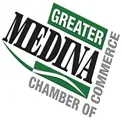A note from our CEO, James Adams
Don’t get me wrong; growing a company is a “great” thing. The most rewarding times in my career were helping companies attain growth rates that were multiples of the industry average. However, I’ve found that executives get consumed with growth when the best way to grow is by focusing on becoming great. Why the disconnect? Simply speaking, most executives focus their energy on quarterly financial performance, not how the financials are generated. So they ask their teams to put up certain numbers in a specific time frame but never ask the simple question, how can we become great?
It is generally recognized that acquiring new customers costs approximately 5 times more than retaining an existing customer. This depends on the industry and product/service, but my experience is that it’s fairly accurate. There’s another important axiom to me: it requires 5 times the effort to secure a new customer than to capture that same amount of revenues from existing customers (different products/services, divisions, geographies, etc.). I’m not suggesting doing one versus the other; my point is that being “great” is the most cost effective way to grow.
When you are great, your customers become your sales people. I will assume most of you are familiar with the Net Promoter Score (NPS). Although once controversial, it’s widely accepted as the single best measure of client satisfaction. On a scale of 0 to 10, how likely is it that you would recommend our company/product/service to a friend or colleague? In my mind, NPS is directly correlated to “greatness” and proportional to market share (for a given segment). In other words, it’s a measure of how well you are delivering on the customer promise.
Hang on a second. Don’t we need to define what “great” means? Well, your customer defines that and it can vary between customers and change over time. I’ve always found the easiest way to determine the answer is to just ask (a novel concept). I can tell you that most sales people don’t ask the question. Marketers usually fall back on the established quality-service-price triangle (personally, I would add “options” and call it the square). By the way, throughout my career I’ve had people suggest that you can only have two of three. That’s rubbish on a number of levels, but that’s for another blog.
So once we know how the customer defines “greatness” through surveys and in-depth interviews, what’s next? Well, look at the complete value chain for delivering your product or service and how it supports the clients vision of being a “great” supplier or service provider. Although there are a number of factors, it typically comes down to the robustness (speed, accuracy, and precision) of key processes your company controls or influences. By the way, Henry Ford’s “you can get it in any color you want as long as it’s black” wasn’t about a lack of capabilities, it was about cost and quality. Making inexpensive and dependable cars for everyone. Old Henry was really the founder of Lean Six Sigma (Lean = cost, Six Sigma = quality). Herb Kelleher used the same darn approach when he started Southwest Airlines. See, there really aren’t any new ideas.
Remember, before you get your hopes up, being great is a never-ending journey. I posted in the previous blog that more than 80% of the Fortune 500 corporations from 50 years ago are gone. When greatness becomes a continuous improvement discipline, then it becomes part of your company’s DNA. And once that happens, you are on the road to becoming big. See, it’s not even a chicken or egg problem. Focus on being great!

.webp)

%2520(1).webp)
%20(6).webp)


%2520(1).webp)















